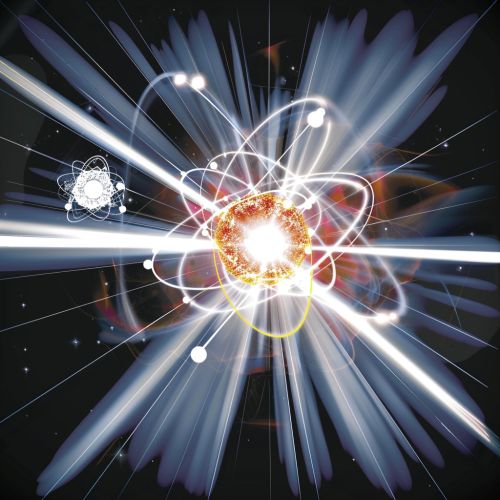Stimulated emission
Introduction
Stimulated emission is a process that occurs when a photon interacts with an atom, molecule, or ion in an excited state, causing it to drop to a lower energy level and emit a second photon of the same frequency, phase, and direction. This principle forms the basis of the operation of lasers and masers, which are devices that produce coherent light or microwave radiation, respectively.
Theoretical Background
The concept of stimulated emission was first proposed by Einstein in 1917, as part of his work on the quantum theory of radiation. He postulated that in addition to spontaneous emission, where an excited atom decays to a lower energy state and emits a photon spontaneously, there could also be stimulated emission, where the presence of a photon triggers the emission of a second photon.


The probability of stimulated emission occurring is proportional to the number of atoms in the excited state and the intensity of the incident radiation. This is expressed by the Einstein coefficients, which are fundamental parameters in the theory of quantum mechanics and quantum optics.
Quantum Mechanical Description
In quantum mechanics, the process of stimulated emission is described using the formalism of quantum electrodynamics (QED). In this framework, the interaction between light and matter is modeled as a quantum field interacting with a quantum system, which can absorb or emit photons.
The key element in this description is the concept of a quantum state, which is a mathematical object that describes the state of a quantum system. In the case of stimulated emission, the quantum system is an atom, molecule, or ion in an excited state, and the quantum field is the electromagnetic field of the incident photon.
The process of stimulated emission can be visualized as a transition between two quantum states, where the initial state is a superposition of the excited state of the atom and the state of the photon field with one photon, and the final state is a superposition of the ground state of the atom and the state of the photon field with two photons.
Applications
Stimulated emission is the fundamental process that enables the operation of lasers and masers. In a laser, a medium with a large number of atoms in an excited state is placed inside a resonant cavity, and a beam of light is passed through the medium. The light beam stimulates the atoms to emit photons, which are then amplified by the resonant cavity to produce a coherent beam of light.
In addition to lasers and masers, stimulated emission is also used in other technologies, such as optical amplifiers, which are devices that amplify an optical signal without converting it to an electrical signal. These devices are essential components of modern optical communication systems, such as fiber-optic networks.
